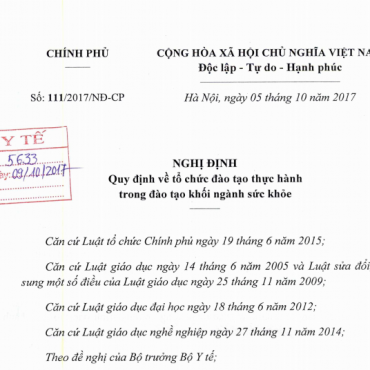Contact Admission
International Collaboration
Experts Discuss COVID-19—Variants and Vaccine Efficacy, Immunosuppressed Patients, and More
Experts Discuss COVID-19—Variants and Vaccine Efficacy, Immunosuppressed Patients, and More
JAMA. 2021;325(17):1711-1712. doi:10.1001/jama.2021.5938
John Moore, PhD
Professor of Microbiology and Immunology at Weill Cornell Medicine
On the outlook for the summer: The more pessimistic perspective—which I personally don’t believe, but let’s go there—is that vaccine-resistant variants become a problem, so we have to rejigger vaccine designs. And that more and more vaccinated people get infected by resistant variants and natural immunity wanes. We could see a problem. The other biggest obstacle is having a very large percentage of undervaccinated people who simply won’t take the vaccines for whatever reasons. It’s not a political issue; it’s a public health issue. But until we reach out into that population and persuade them to take the vaccines, we’re going to have a long, large reservoir of people who would continue to be infected and spread the virus.
Variants and undervaccination are the 2 biggest obstacles I can see, because we know that by the summer we’re going to have enough vaccine to immunize everyone who wants it. And the vaccines do work for the viruses we have at present. I think it’s reasonable grounds for optimism that by the middle to end of the summer, life could start to return to normal. But only if we maintain our discipline. It’s not over yet. Opening up states willy-nilly and throwing away your masks is just not the right thing to do. It’s a political decision and not a science- and public health–driven one.
On vaccine doses: If you’re dealing with variants, you want the strongest possible antibody response. One dose of mRNA vaccine sera just cannot deal with the variant that arose in South Africa. Two-dose sera can cope because it’s that much stronger to start with, so a reduction [in response] can be tolerated. So if we’re dealing with variants that are spreading and are more resistant, let’s have the strongest possible antibody response, and that means 2 doses in the recommended timeline.
There’s a more subtle point. An antibody-resistant variant arises in a circumstance where you have a meaningful, but not terribly strong, antibody response. The circumstance where you have an intermediate antibody response is exactly the circumstance that you have after the first dose of an mRNA vaccine.
On vaccines for variants: All the companies are working on redesigning their vaccines, particularly to deal with the B.1.351 strain that arose in South Africa. But it takes multiple months to reproduce new stocks. Another strategy is simply to give a third dose of the mRNA vaccines and the second dose of the Janssen/Johnson & Johnson vaccine, which is being tested in phase 3 trials. I personally think that the 2-dose Johnson & Johnson will overcome any limitations, based on animal studies.
It’s common in clinical trials for different vaccine designs to be used sequentially. Johnson & Johnson, for example, has a large-scale [phase 2 HIV vaccine] trial in Southern Africa of an adenovirus vector that’s very similar to their COVID vaccine, followed by a protein boost. There are [COVID-19] protein vaccines coming down the pike. If these are approved, they might make excellent boosts for adenovirus vectors, and conceivably for the mRNAs.
On immunocompromised patients: People with severe B-cell defects are not going to respond well to infection and vaccination. And there are case reports of troubling variants arising within immunosuppressed people because they have a long-sustained viremia. So they are potentially sources of resistant variants. In the hospital setting they need to be particularly carefully looked after from the transmission perspective. We absolutely need more studies on this.
I doubt there would be a risk to being vaccinated but it might not do them any good. Passive antibody therapy is particularly valuable in that setting, both to treat and for prevention purposes. Antibody therapies can be preventative in circumstances where people are particularly vulnerable, such as immunocompromised patients. You might have to come in for an infusion every 3 or 4 weeks, but that’s definitely okay given the alternative.
Carlos del Rio, MD
Distinguished Professor of Medicine in the Division of Infectious Diseases at Emory University School of Medicine
On immunosuppression and vaccines: We know from different data that people who are immunocompromised with certain conditions are at particularly high risk of COVID. I tell people, “Get immunized, but you need to be careful. If you happen to be on a monoclonal antibody that wipes out your B cells or you happen to have a lymphoma or something in which your B cells are not as effective, you may not respond to the vaccine in the way somebody else would respond. So the protection you get from the vaccine will be very different.”
On vaccine accessibility: We made it complicated to get vaccinated by having to go to a website and sign up. The people that are more savvy are going to get them. We need to make it easy. Where I work, at Grady Hospital, when we realized very quickly that having people make appointments just made it complicated, we made it open access so people can just show up and get their vaccine. If they’re here for a clinic, just have them go downstairs and get their vaccine. But we also have to work with trusted messengers in the community.
On vaccine messaging: You really have to give people some positive things as a result of vaccination. If you’re 65 or older, being told you’re not going to die sounds like a good benefit. But if you’re 20 or 35, and you’re told you’re going to get vaccinated and your life is not going to change, well, why should I get vaccinated? So I think certain things are going to be important to tell people—the kinds of things you can do if you’ve been vaccinated. The idea that you can gather in small groups without wearing a mask indoors is fantastic.
About global vaccine sharing: This is not about charity. It’s in the best interest of Americans to get everybody immunized. It’s in the best interests of our economy. If we want travelers from other countries to come here and spend their money here, we better get them immunized. If we want them to buy our goods, we better get them immunized. But it’s also about diplomacy. The US has retracted as being a global leader. China, Russia, and other countries are giving their vaccines to countries in Latin America and Africa as goodwill and as global health diplomacy. We have to get back in there. That is what the US has excelled on. I really think it’s in our best interest as citizens of the world. I really worry about Latin America. It is the region most impacted by this epidemic. We have a really serious problem right now in Brazil, in Mexico, in Argentina, in Colombia. We have to make sure that in Latin America we get those vaccines.
Preeti Malani, MD, MSJ
Chief Health Officer at the University of Michigan and Professor of Medicine in the Division of Infectious Diseases; JAMA Associate Editor
About vaccine hesitancy: Vaccine hesitancy is not one thing. We label certain communities. But we’re not talking as much about hesitancy in rural communities and among more conservative voters, and those groups probably have more hesitancy than some of the communities that we think of in urban areas. In the National Poll on Healthy Aging, people really trusted their doctor’s recommendation. It really comes down to having those lengthy conversations with someone who is trusted because if you don’t believe that the virus is real or everyone around you doesn’t believe this is real, you may not want to go get this.
About getting back to school: A lot of my perspective has been the [university] campus and trying to get students back to face-to-face learning and all the benefits of that. A year ago it was only about viral transmission. Nothing else mattered, and it was like we just closed the light, shut the door, and sent everyone home. Getting back has been really complicated. At some point, the virus is going to be in the background. It can’t be everything. We’re going to have to live with some residual risk.
About socializing on campus: We can’t have an abstinence-only view on this, particularly with young people. What I talk about a lot with the [school] president and with the students is to stay in your groups as much as you can, stay outside as much as you can and, if you go home, please don’t take COVID with you. I worry a lot about the students going back and forth, because there’s not enough to do on campus. These are high-risk times. I think we also need to remember that COVID is not the only risk in our life, and that all the other risks need to be balanced with this. I think it is very much a balancing act.
Full video and audio of this interview with del Rio and Malani are available online.
Domenico Luca Grieco, MD
Department of Emergency, Intensive Care Medicine and Anesthesia, Fondazione Policlinico Universitario AGemelli IRCCS, Rome, Italy
On the HENIVOT Randomized Clinical Trial: The primary end point was the proportion of days in which patients [with COVID-19] did not receive any form of advanced respiratory support. There was no difference in the primary outcome, but we found that there was a significant reduction in the amount of patients who required endotracheal intubation and invasive mechanical ventilation [among those who received helmet noninvasive ventilation (NIV) vs high-flow nasal oxygen].
Maybe there are some patients who only need flow—an increase of the oxygen amount that they are receiving. And there are others that really need [an increase in the] amount of pressure, maybe to control their inspiratory effort. One idea could be that patients with intense inspiratory effort need something to relieve it. So it may be that they need helmet NIV. We saw that there are patients in whom the inspiratory effort is not high. They are completely calm and do not experience huge tidal volumes. Maybe in these patients, the optimum tool is just to increase the amount of oxygen they are receiving, so they use high-flow. The future of the research on this topic is randomized controlled studies to identify patient populations in which the [different] interventions may work better.
Full video and audio of this interview are available online.
Source: https://jamanetwork.com/journals/jama/fullarticle/2778876?guestAccessKey=f50c1d38-3866-4a07-a63a-e0a5eb4935cc&utm_source=silverchair&utm_campaign=jama_network&utm_content=covid_weekly_highlights&utm_medium=email
Other library
- One in 10 People Who Had Omicron Got Long COVID: Study ( 20:25 - 01/06/2023 )
- Physical Medicine Academy Issues Guidance on Long COVID Neurologic Symptoms ( 09:58 - 19/05/2023 )
- Breakthrough' Study: Diabetes Drug Helps Prevent Long COVID ( 08:55 - 15/03/2023 )
- BCG vaccine (thuốc chủng ngừa bệnh lao) & SARS-CoV 2 (covid-19) infection ( 10:08 - 27/10/2022 )
- Đại dịch COVID-19 đã kết thúc? ( 09:11 - 22/09/2022 )
- Dị hình giới tính ở COVID-19: Ý nghĩa tiềm năng về lâm sàng và sức khỏe cộng đồng ( 09:22 - 19/03/2022 )
- COVID-19 Update ( 21:00 - 06/03/2022 )
- Một người có thể tái mắc Covid-19 bao nhiêu lần ?? / kèm 6 tài liệu mới ... do "waning immunity", xảy ra ≥6 tháng sau chủng ngừa hay mắc nhiễm .. ( 20:25 - 06/03/2022 )
- T-cells from common colds can provide protection against COVID-19 - study ( 08:25 - 11/01/2022 )
- Coronavirus Can Spread to Heart, Brain Days After Infection ( 07:56 - 30/12/2021 )

















